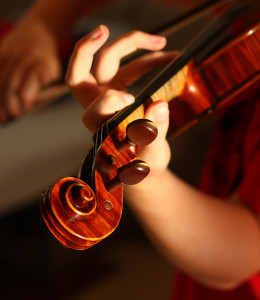 MMA fighter Pat Healy has called floating his “secret weapon“. “It’s hard to explain, but man, you really come out of there feeling relaxed. You can really focus your mind in there.”
MMA fighter Pat Healy has called floating his “secret weapon“. “It’s hard to explain, but man, you really come out of there feeling relaxed. You can really focus your mind in there.”
Former Texas air pistol champion Brooks Brinson believes flotation helps him compete. “It’s really a very mental game, the most mental in the Olympics.”
Hoop dancer Katelyn Selanders had burned out on her art. But then she started floating and found a new wellspring of passion. “I was fully reminded that this was why I had started hooping in the first place!”
We’ve already talked about the physiological benefits of flotation for injury recovery. But when it comes to athletes and performers, there is more to it than that. Flotation can induce a state of “relaxed alertness, concentration and reduced stress,” and sometimes that is just what the doctor ordered for bringing out your best.
As is generally the case with the science of floating, the studies are numerous but small. Dierendonck & Nijenhuis did a meta-analysis in 2005 aggregating all the published results, and concluded that for the types of performance that had been studied, there was a 95% chance that floating improved the targeted aspects by at least a third of a standard deviation. (Note! that means, for instance, that if people in the study group score between 60 and 80 on whatever the test is, with a standard deviation of 6, then floating might raise the average score by 2 points.)
That sounds great, but what kind of “performance” are we talking about? Here is a summary of the studies I’ve been able to find.
| Skill | Study | Subjects | Results |
|---|---|---|---|
| Archery | Norlander et al, 1999 | 20 elite competitive archers | Less perceived exertion and more consistent shooting |
| Basketball (3-point shooting) | Klusemann et al, 2013 | 19 elite female basketball players | No clear effect |
| Basketball (free-throw shooting) | Suedfeld & Bruno, 1990 | 30 novice players | Significantly higher shooting accuracy |
| Basketball (overall) | Wagaman et al, 1991 | 22 intercollegiate basketball players | Significantly improved “objective game performance” and coaches’ blind ratings |
| Jazz improvisation | Vartanian & Suedfeld, 2011 | 13 intermediate-level students | Significantly improved scores for technical ability and overall grade, but not for creativity or expressiveness |
| Rifle marksmanship | Barabasz et al, 1993 | 24 students in training course | Significantly higher marksmanship scores |
| Tennis | McAleney et al, 1990 | 20 intercollegiate tennis players | Significantly improved first service accuracy |
One obvious question would be why Suedfeld and Bruno (1990) and Wagaman et al (1991) found improvements in basketball performance, while Klusemann et al (2013) did not. There were many differences in methodology, though, including the length and number of float sessions, the use of additional audio or video training materials, the prior skill level of participants, and the specific skills tests (pure shooting, or overall playing performance) — any of these could turn out to be relevant. And in studies with small numbers of participants, blind luck is also always a possibility.
Another result worth noting is Vartanian & Suedfeld on jazz improvisation. They found a significant improvement in technical ability, but notably not a comparable improvement in creativity. Other studies certainly have shown creativity benefits from floating, so what gives? The most likely explanation is due to test methodology. Improvement in creativity is most strongly seen during and immediately following the float session, while the subject is still in the induced altered state. This study, meanwhile, was specifically designed to test longer-term learning improvements.
D van Dierendonck, J te Nijenhuis, 2005, “Flotation restricted environmental stimulation therapy (REST) as a stress-management tool: A meta-analysis”.
Psychology and Health June, 2005, 20(3): 405–412. DOI: 10.1080/08870440412331337093
P McAleney, A Barabasz, M Barabasz, 1990, “Effects of Flotation Restricted Environmental Stimulation on Intercollegiate Tennis Performance”.
Perceptual and Motor Skills 01/1990; 71(7). DOI: 10.2466/PMS.71.7.1023-1028
A Barabasz, M Barabasz, J Bauman, 1993, “Restricted environmental stimulation technique improves human performance: rifle marksmanship”.
Perceptual and Motor Skills 07/1993; 76(3 Pt 1):867-73.
O Vartanian, P Suedfeld, 2011, “The Effect of the Flotation Version of Restricted Environmental Stimulation Technique (REST) on Jazz Improvisation”.
Music and Medicine, 3, 234-238. DOI: 10.1177/1943862111407640
T Norlander, H Bergman, T Archer, 1999, “Primary process in competitive archery performance: Effects of flotation REST”.
Journal of Applied Sport Psychology 01/1999; 11(2):194-209. DOI: 10.1080/10413209908404200
M Klusemann, J Headrick, C Argus, D Pyne, A Gorman, E Drinkwater, 2013, “Video-based training combined with flotation tank recovery does not improve three-point shooting in basketball”
International Journal of Performance Analysis in Sport 01/2013; 13(1):1-10.
J Wagaman, A Barabasz, M Barabasz, 1991, “Flotation REST and Imagery in the Improvement of Collegiate Basketball Performance”.
Perceptual and Motor Skills 01/1991; 72(1). DOI: 10.2466/PMS.72.1.119-122
P Suedfeld, T Bruno, 1990, “Flotation REST and Imagery in the Improvement of Athletic Performance”. J Sport and Exercise Psychology, 1990, 12, 82–5.